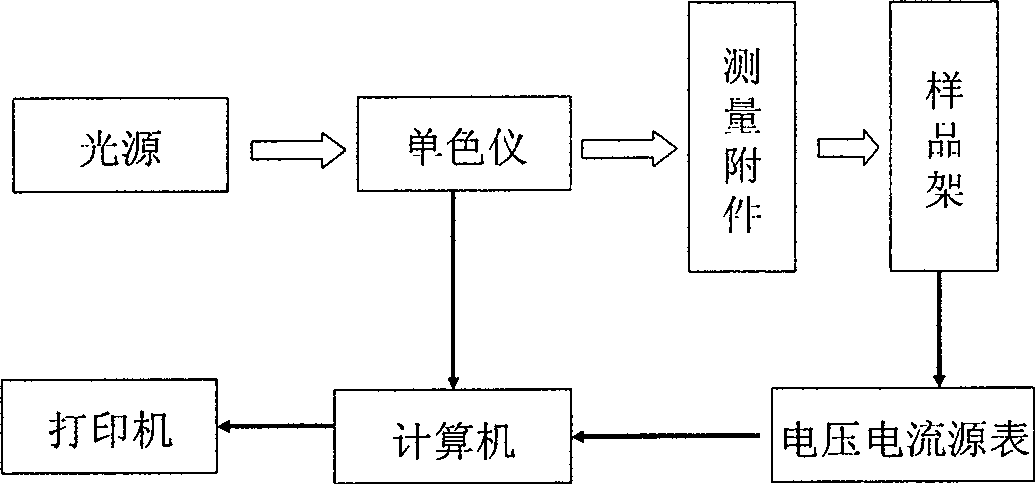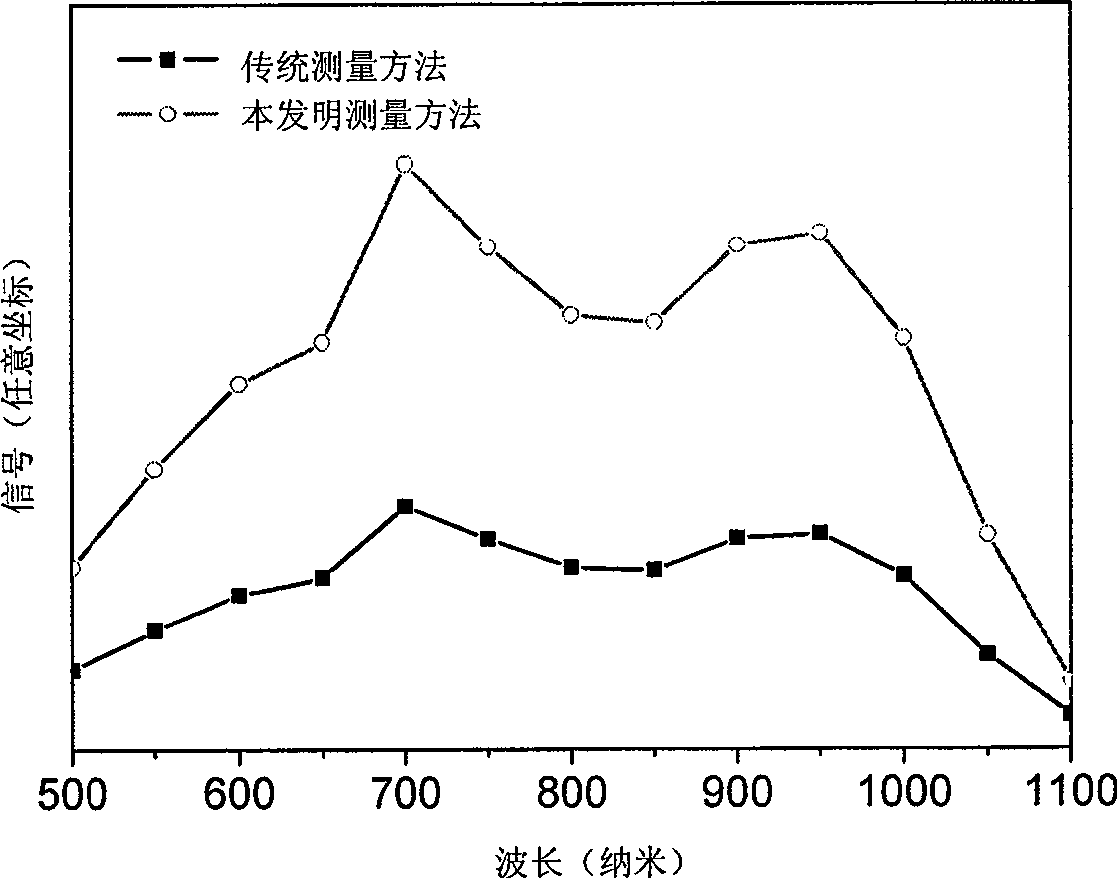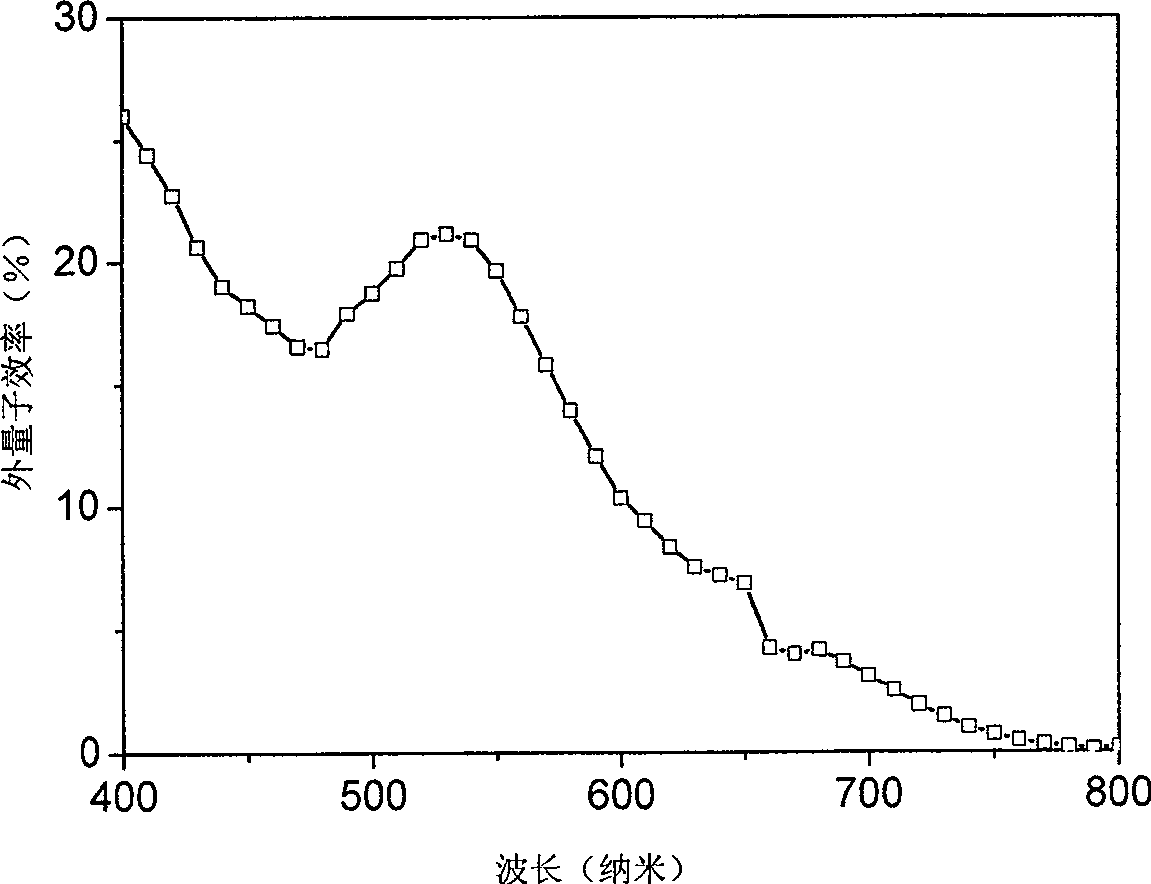Method for measuring dye sensitized solar battery conversion efficiency and mono-wavelength quantum efficiency
A solar cell and dye sensitization technology is applied in the field of testing the conversion efficiency and single-wavelength quantum efficiency of dye-sensitized nano-film solar cells, and can solve the problem that the performance of dye-sensitized nano-film solar cells and solar cells cannot be correctly reflected. Inconvenient scientific research, different response of battery light, etc., to reduce the cost of measuring instruments, avoid measurement interference, and reduce the optical path.
- Summary
- Abstract
- Description
- Claims
- Application Information
AI Technical Summary
Problems solved by technology
Method used
Image
Examples
Embodiment Construction
[0020] The present invention will be further described below in conjunction with the examples: adopt Orial analog light source, halogen lamp and deuterium lamp as light source respectively, utilize Zhuoli Hanguang monochromator, and the small current source measuring instrument produced by U.S. Keithley Company to measure dye sensitivity The room temperature conversion efficiency, single-wavelength external quantum efficiency and internal quantum efficiency of the nanometer thin film solar cell samples in the ultraviolet to visible range. Two dye-sensitized solar cell samples prepared by different methods were used for measurement: the photoanode of sample S1 was prepared by screen printing method; the photoanode of sample S2 was prepared by coating method. The test is carried out under the following conditions: the light source is Zolix bromine tungsten lamp, deuterium lamp, and Orial simulated light source, and the test temperature is 25±2°C. The standard reference battery i...
PUM
 Login to View More
Login to View More Abstract
Description
Claims
Application Information
 Login to View More
Login to View More - R&D
- Intellectual Property
- Life Sciences
- Materials
- Tech Scout
- Unparalleled Data Quality
- Higher Quality Content
- 60% Fewer Hallucinations
Browse by: Latest US Patents, China's latest patents, Technical Efficacy Thesaurus, Application Domain, Technology Topic, Popular Technical Reports.
© 2025 PatSnap. All rights reserved.Legal|Privacy policy|Modern Slavery Act Transparency Statement|Sitemap|About US| Contact US: help@patsnap.com



